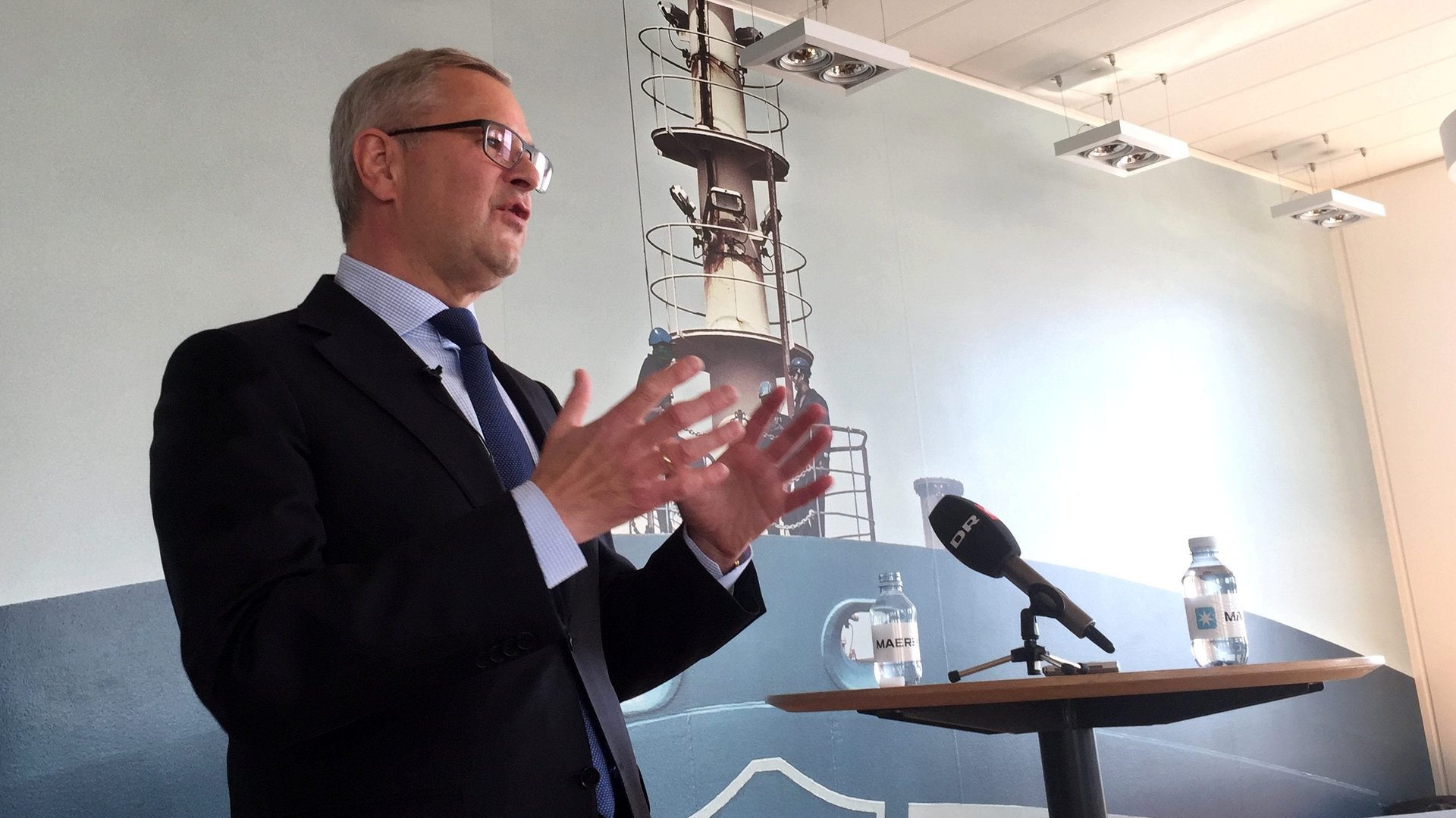Maersk could push the entire shipping industry to move up its climate goals
Maersk, the world’s second-largest shipping line, pledged on Jan. 12 to make its business carbon neutral by 2040 instead of its previously stated goal of 2050. The company also expanded its net-zero emissions pledge to include the emissions produced by its energy consumption and its supply chains, something few major corporations have proven willing to do.


Maersk, the world’s second-largest shipping line, pledged on Jan. 12 to make its business carbon neutral by 2040 instead of its previously stated goal of 2050. The company also expanded its net-zero emissions pledge to include the emissions produced by its energy consumption and its supply chains, something few major corporations have proven willing to do.
Maersk’s new climate goals are more aggressive than any of its shipping industry rivals. MSC and CMA CGM, the largest and third largest shipping lines, respectively, have each pledged to hit net-zero carbon emissions by 2050. Hapag-Lloyd, the fifth largest, has pledged to be “climate neutral” by 2045, and Chinese state-run line COSCO, the fourth largest, has not announced a zero emissions target.
Maersk and its shipping industry peers are pursuing different strategies to cut emissions. The rest of the industry has coalesced around a gradual plan to replace oil-based fuels with liquid natural gas—which emits 20% less carbon dioxide—and then, eventually, transition to carbon-neutral alternative fuels. But Maersk is skipping the natural gas transition and jumping straight to low-carbon alternatives like methanol; the company has ordered 12 methanol-powered cargo ships, set to be delivered starting in 2024, and it bought stakes in methanol suppliers to meet its fuel needs. (Methanol can be low-carbon, carbon-neutral, or even carbon-negative depending on how it’s made.)
“The technology is available, so it’s really about having the will to act,” Maersk CEO Søren Skou said in a video announcing the company’s 2040 goal.
Maersk’s ambitions are aided by $14.8 billion in profits the shipping company booked during the pandemic when supply chain chaos drove up freight rates. In December and January, Maersk used some of that cash to buy its methanol-powered ships for $2.1 billion, a 10% to15% premium over fossil-fueled counterparts. The ships are scheduled for delivery starting in 2024.
Maersk’s announcement raises the pressure on its rivals to cut emissions more aggressively. The rest of the world’s largest shipping lines are also sitting on billions of dollars of pandemic profits. “Maersk increasing its climate target by a decade just four years after the company began its decarbonization journey shows that a dramatically faster zero-emission timeline for the global shipping industry is possible,” said Dawny’all Heydari, campaign lead at the climate advocacy group Ship It Zero, in an emailed statement.
Turning climate goals into a competitive edge
Maersk plans to use its aggressive climate goals to win over the world’s largest shipping customers. Major retailers and manufacturers, including Amazon, IKEA, and Unilever, have committed to using exclusively zero-emission ships to transport cargo by 2040—and right now, Maersk is the only shipping line that plans to offer completely carbon-neutral shipping by that deadline.
That gives Maersk a strong sales pitch to big customers with climate targets (and a reason for Maersk’s rivals to move up their own deadlines). But it won’t come cheap. Maersk will have to spend billions of dollars on new ships, planes, trucks, and fuels to make good on its climate goals. And the entire zero-carbon supply chain to construct and fuel such vehicles must still be scaled up.
Even Maersk’s order of 12 methanol-fueled ships is a small downpayment on what will be required. Its new green ships will be able to hold the equivalent of 192,000 20-foot cargo containers—less than 5% of Maersk’s current cargo capacity. Yet the company promises that 25% of its ocean cargo will be transported using green fuels by 2030.
Maersk has also vowed to transport at least 30% of its air cargo using sustainable aviation fuels made from crops, food waste, landfill gases, and other low-carbon sources by 2030. But sustainable aviation fuel production met less than 1% of global jet fuel demand (PDF) in 2019, according to the International Air Transport Association.
While shipping lines’ sky-high pandemic profits won’t last forever, Maersk is spending now to expand into a diverse set of logistics businesses which may give it a reliable revenue stream to fund its climate ambitions. Some of its rivals, which have focused more narrowly on shipping, may not be able to keep up with Maersk’s aggressive climate spending. Any company that can find the financing to meet ambitious climate goals may also discover a competitive edge in a cutthroat shipping industry where carbon emissions are a key selling point.